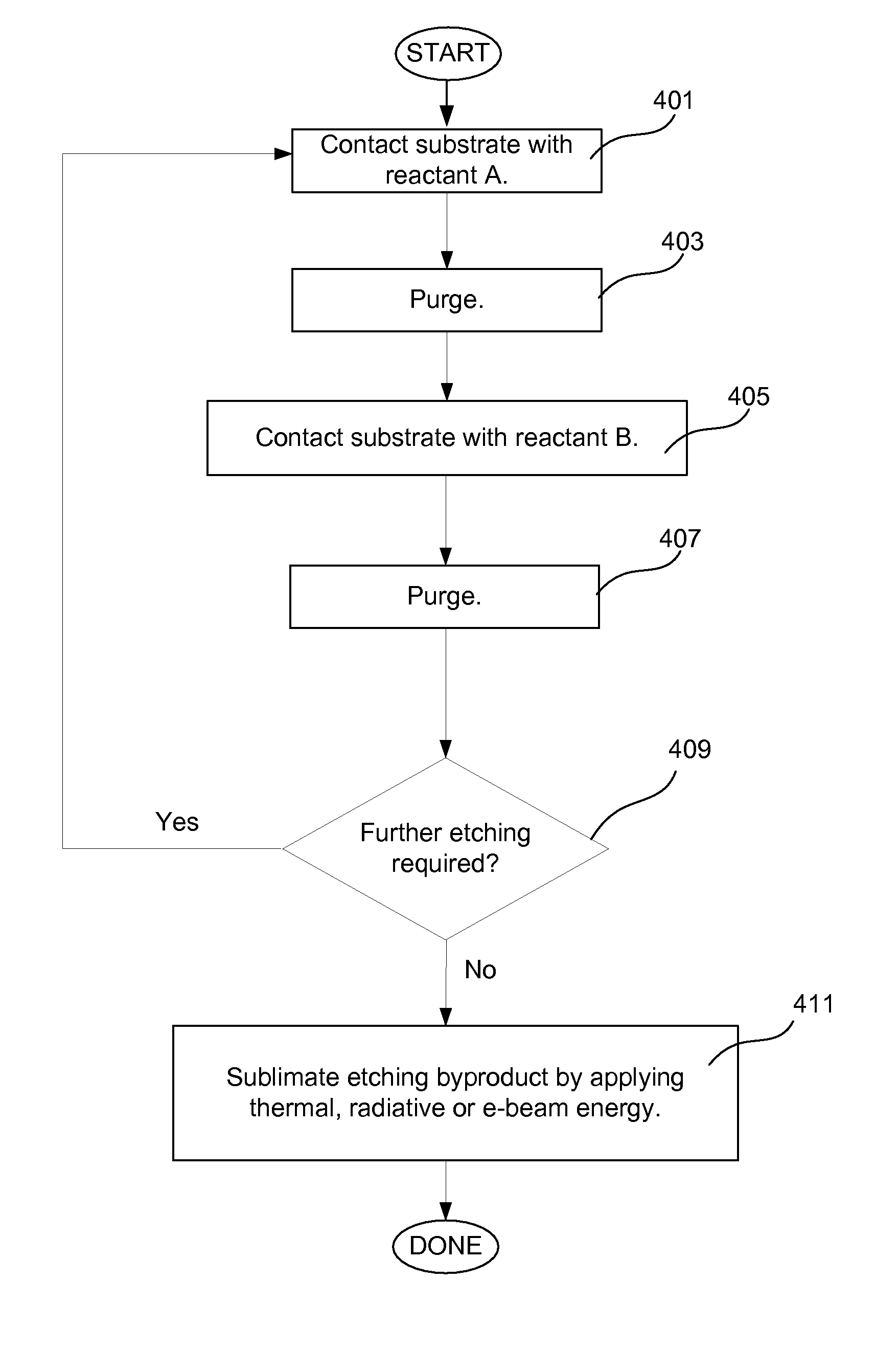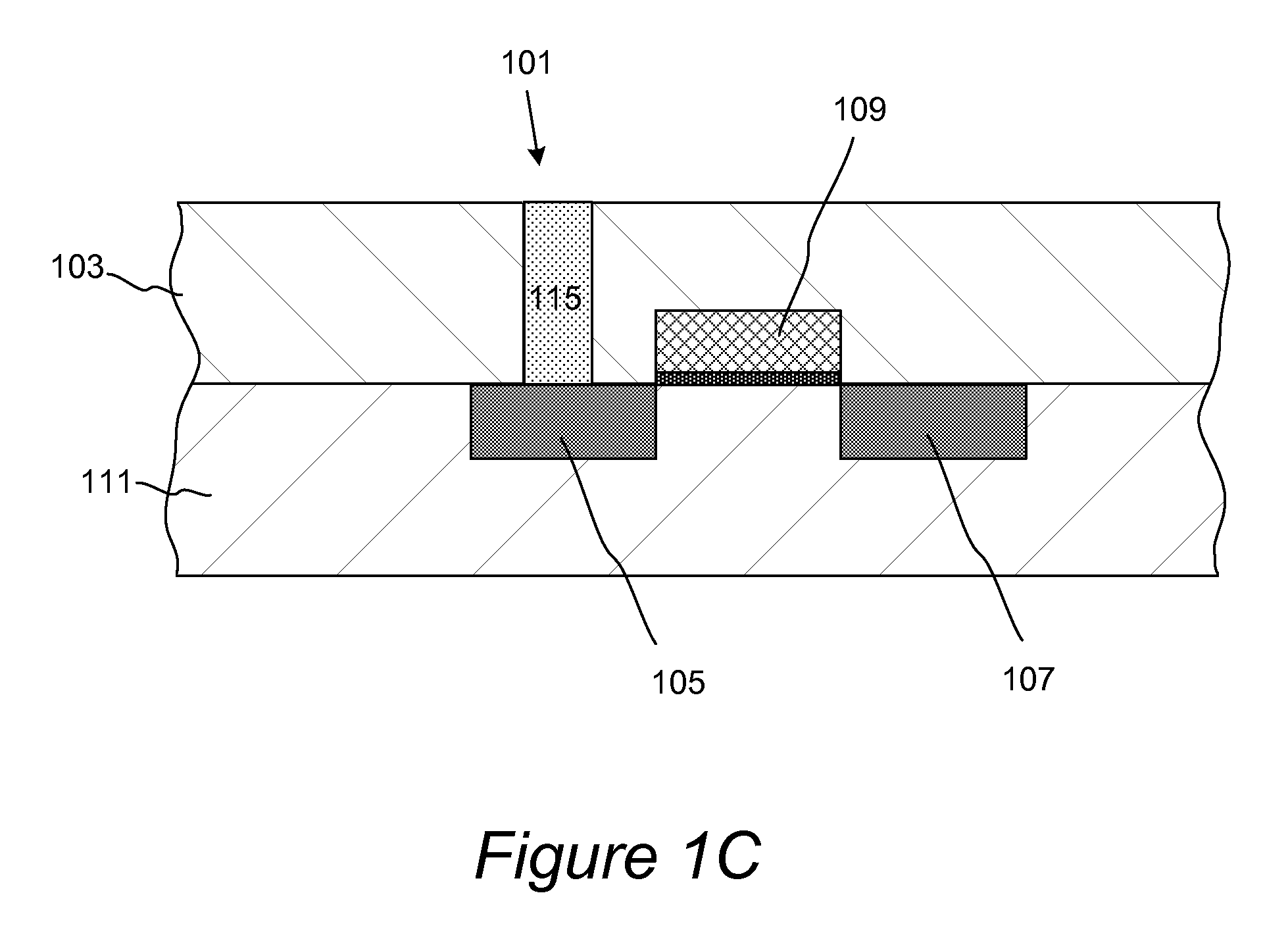Adsorption based material removal process
a technology of adsorption and material, applied in the direction of decorative arts, decorative surface effects, electric devices, etc., can solve the problems of limited halogen-silicon chemistry, limited methods for controlling the removal of one or several atomic layers, and inapplicability to other materials of the ic device, such as silicon dioxid
- Summary
- Abstract
- Description
- Claims
- Application Information
AI Technical Summary
Benefits of technology
Problems solved by technology
Method used
Image
Examples
Embodiment Construction
[0041]Aspects of the present invention are directed to atomic layer removal (ALR™) of materials from substrates, such as partially fabricated integrated circuits. While the methods of present invention find particular use in the processing of semiconductor substrates, they can also be employed in other applications, such as removal of oxide material from other workpieces such as those employed in flat panel display manufacturing. ALR™ methods achieve accurate and conformal removal of material on small scales not feasible with prior techniques, e.g. on scales of about 160 Å or smaller. In fact, they can be employed when removal of layers of only several angstroms or tens of angstroms is desired. Atomic layer removal methods allow control of the depth of etching by repeating deposition of etchant cycles, where each cycle may remove as little as only a monolayer or submonolayer of material. These methods can be performed in a CVD-type apparatus, and can be easily integrated with existi...
PUM
| Property | Measurement | Unit |
|---|---|---|
| depth | aaaaa | aaaaa |
| depth | aaaaa | aaaaa |
| depth | aaaaa | aaaaa |
Abstract
Description
Claims
Application Information
 Login to View More
Login to View More - R&D
- Intellectual Property
- Life Sciences
- Materials
- Tech Scout
- Unparalleled Data Quality
- Higher Quality Content
- 60% Fewer Hallucinations
Browse by: Latest US Patents, China's latest patents, Technical Efficacy Thesaurus, Application Domain, Technology Topic, Popular Technical Reports.
© 2025 PatSnap. All rights reserved.Legal|Privacy policy|Modern Slavery Act Transparency Statement|Sitemap|About US| Contact US: help@patsnap.com



